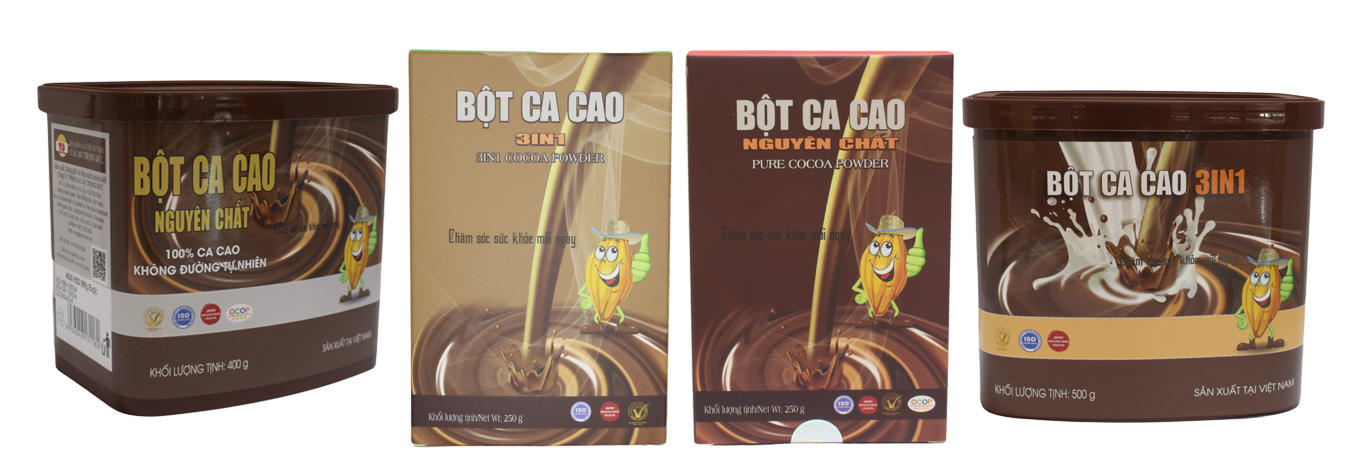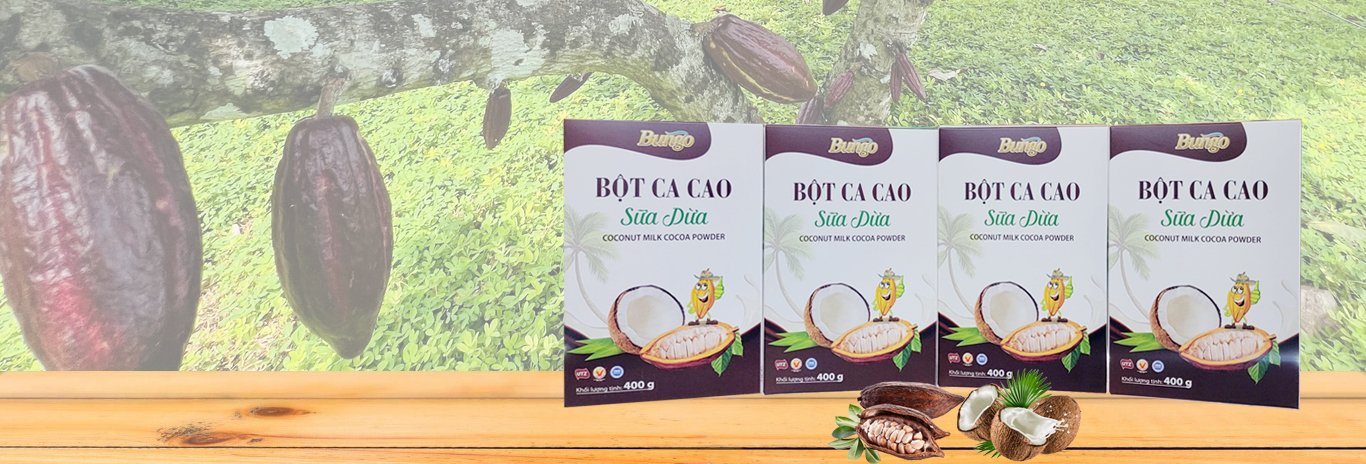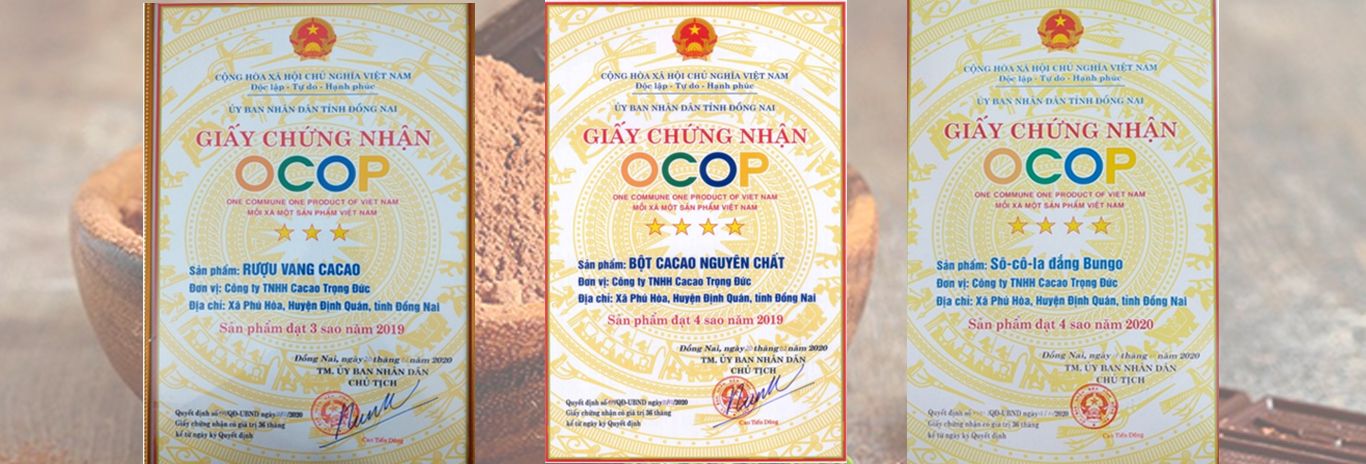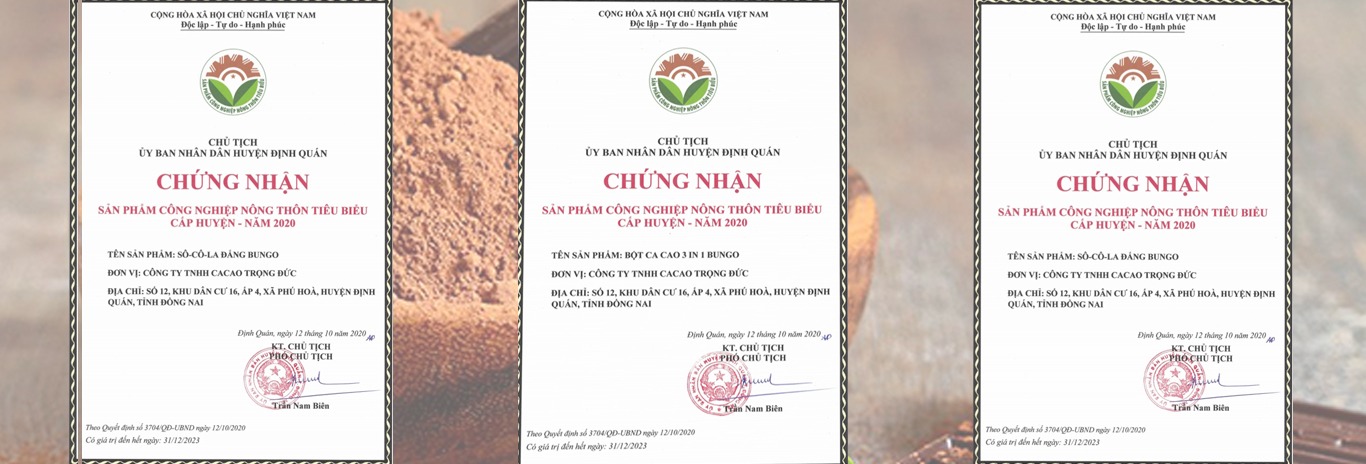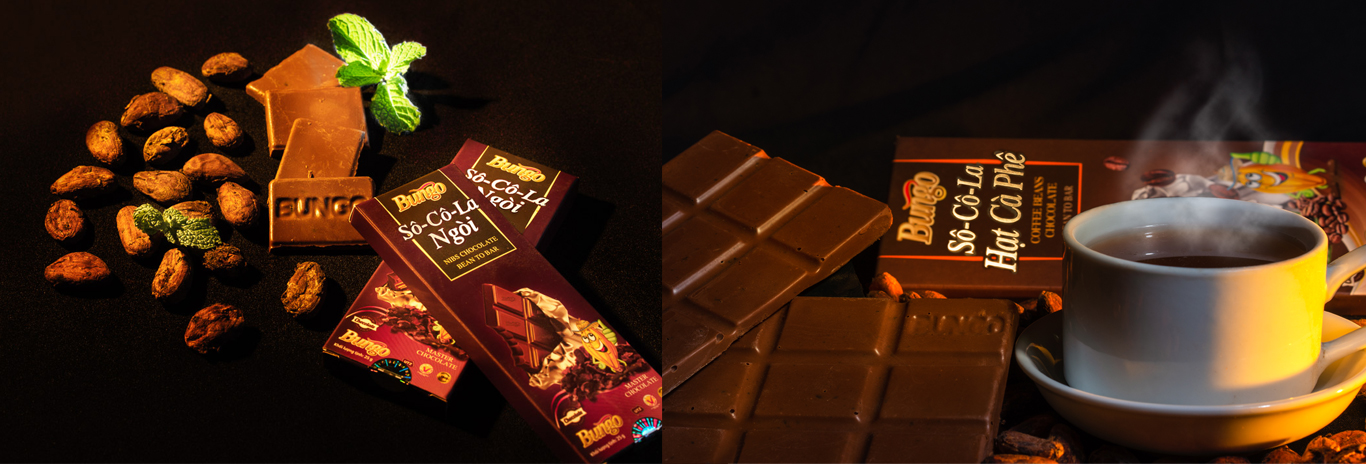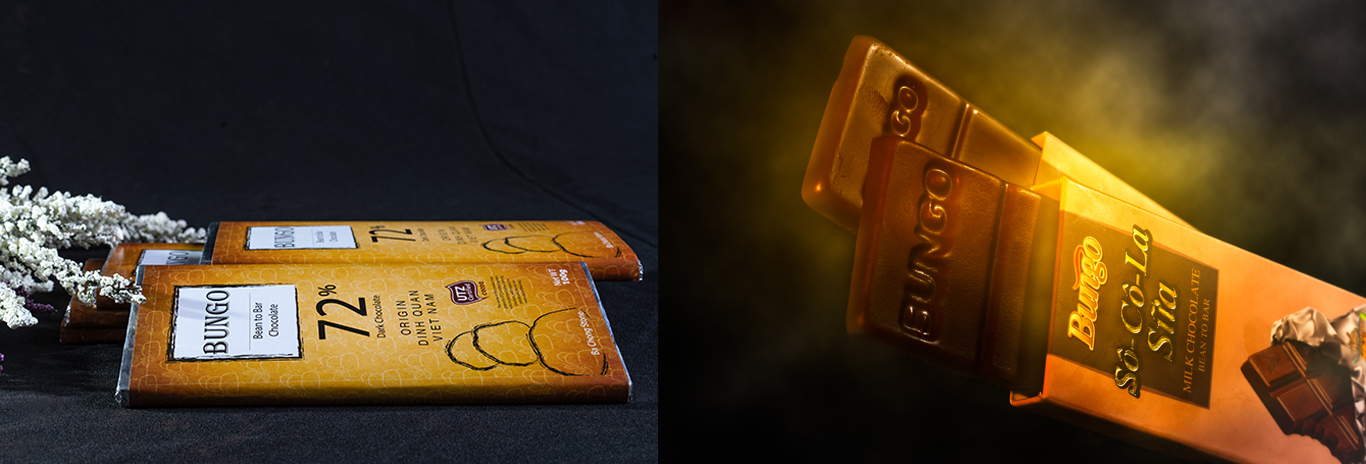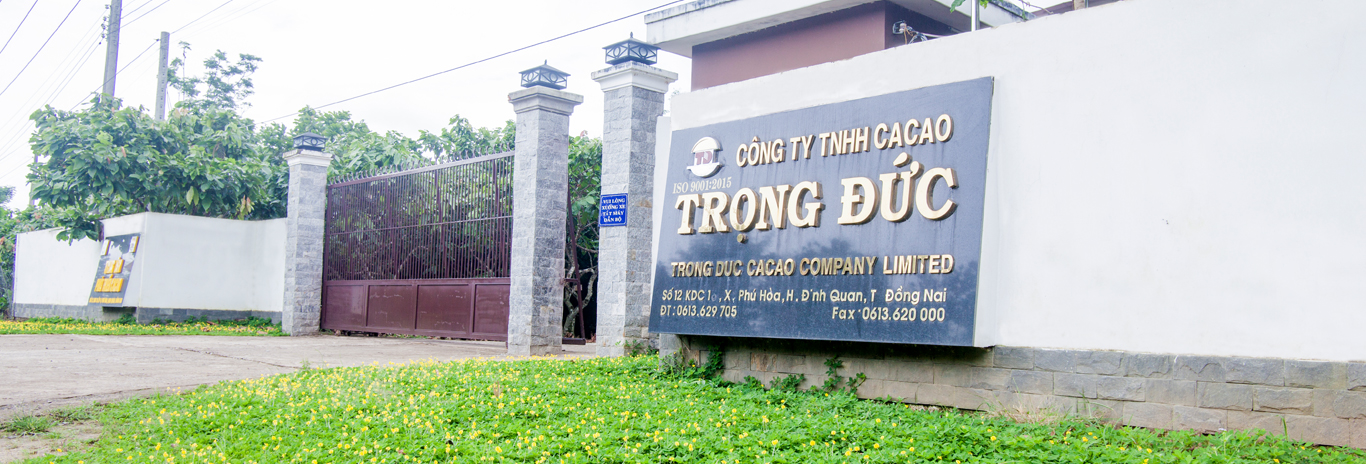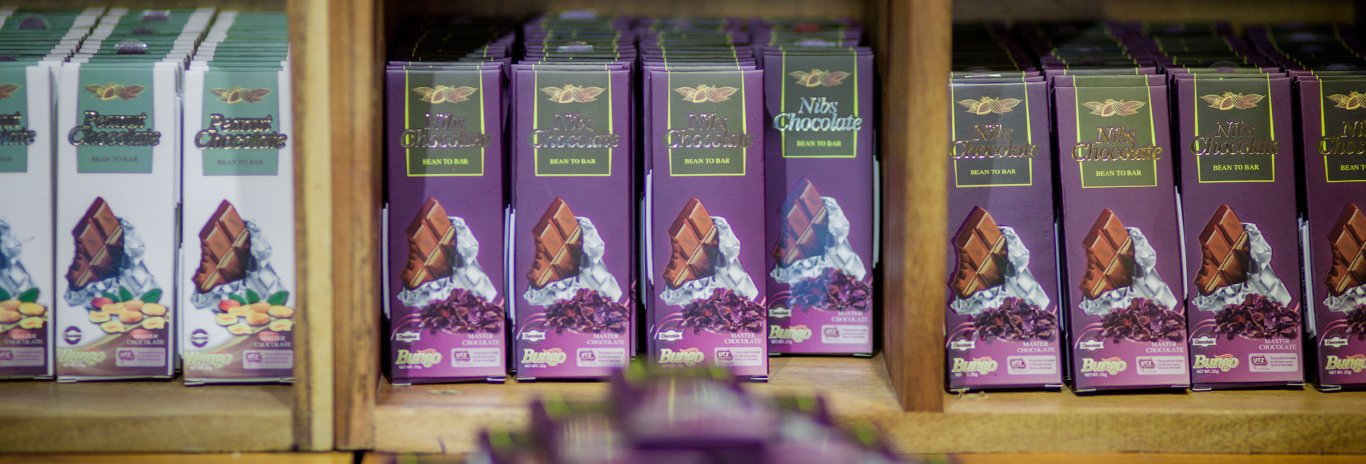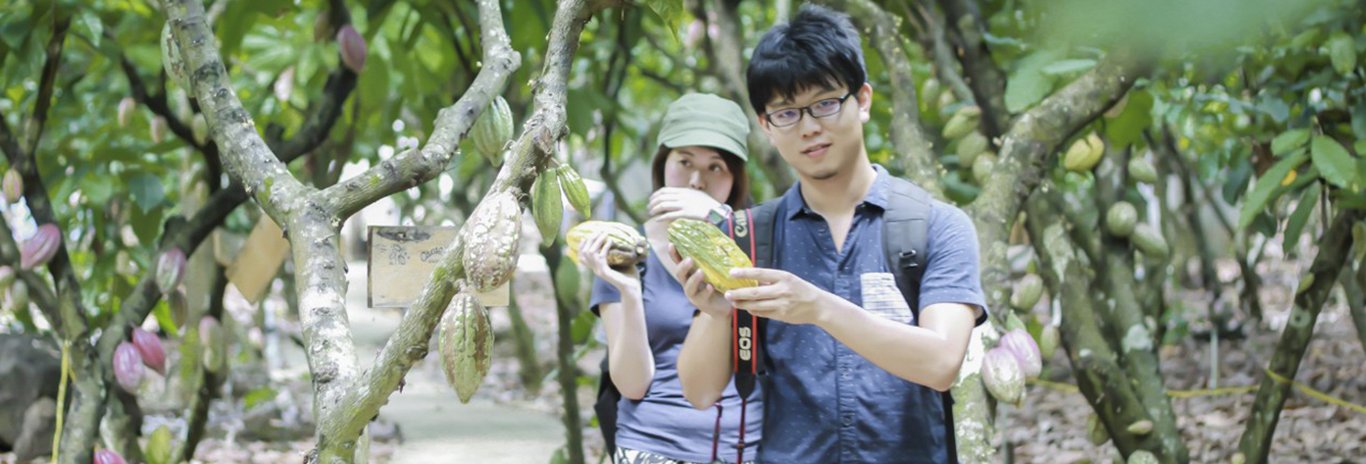
Nutritional composition of cocoa beans
Many consumers believe that cocoa powder is the main ingredient with the highest and best nutrition for users. However, to be able to create such a pure and quality cocoa powder, cocoa beans are the main nutrient-carrying ingredients from which pure cocoa powder can be created. To understand more about the nutritional composition of Trong Duc cocoa beans, please follow the article below.

The cocoa fruit or pods are melon-shaped (12 - 30 cm long and 8 - 12 cm wide) with an average weight of 400 - 600 g. Each fruit usually contains 30-40 seeds contained in a white pulp that is sweet when the skin is fresh. The outer seeds are reddish brown in color and dark brown inside due to their rich polyphenolic content. The pulp is aromatic and mucilaginous, consisting of spongy parenchyma cells containing a carbohydrate-rich resin. The rice and cocoa beans account for about one-third to one-half of the total weight of the pod (125 - 200 g). Although it takes 20 or more pods to harvest 1 kg of processed commercial cocoa powder, from a food perspective, the powder from one pod is enough to provide half of a small person's daily needs. (450 - 700 calories). Regarding cocoa powder, 100 hundred grams (about 14 pounds) can provide 10-20% of a young person's energy needs and contribute a significant amount of one's vitamin and mineral needs.
Cocoa beans contain about 40-50% fat and 14-18% protein depending on the time of harvest. Although cocoa is not an optimal source of vitamins as a food, on an energy-per-unit basis (expressed, for example, as an amount per calorie), cocoa is sufficient. Cocoa is an excellent source of essential minerals. For example, 50-100 grams of cocoa powder can meet the human daily requirement for most minerals or trace minerals. In terms of protein, its content in cocoa is sufficient on an energy basis, but the quality of the protein is somewhat negligible because the concentrations of the two essential amino acids, methionine and cysteine, are too low to meet human needs. .
1. Lipids
The fat in cocoa (cocoa butter) has a neutral taste. In terms of calorie content, cocoa butter accounts for about 50-60%. The predominant fatty acids in the triacylglycerol (triglyceride) fraction of cocoa butter are oleic, palmitic and stearic acids (>90%) combined with several polyunsaturated fatty acids, mainly arachidonic and linolinic acids (>90%) 5 - 10%). The lipids in cocoa butter, which are not absorbed as efficiently or as quickly as other vegetable fats due to the rather complex molecular configuration of these fatty acids in triglycerides, slow down the overall and specific metabolism time. slows intestinal absorption. With respect to cocoa butter consumption and its effect on serum lipids, the rate of absorption of triacylglycerides in cocoa butter was slower and the polyphenolic content was high in cocoa. In cocoa eaters, plasma LDL cholesterol, oxidized LDL (known as the bad cholesterol component) and apo B (a lipoprotein polypeptide important for LDL function) were decreased, while plasma HDL cholesterol (known as the "bad" cholesterol component) was reduced. is good cholesterol) increases.
2. Proteins and amino acids
The protein content in cocoa beans is typical of many nuts, the protein quality - based on the distribution of several essential amino acids - is relatively poor. Compared with a typical reference protein, for example, egg white, which has a biological value and chemical score of 100 as a basis of comparison, the chemical score for cocoa protein is 25 lower, due to the low amount of methionine, one essential amino acids needed to make a complete protein.
Chemical score is a method of evaluating proteins based on their chemical composition (more specifically, essential amino acid concentrations relative to a selected reference). To determine the chemical score, one protein is selected as a reference and the other proteins are ranked relative to that reference protein. Typically, egg proteins are used assuming that the amino acids of the egg are ideal; that is, the essential amino acid requirements will be met when eaten in the required amounts.
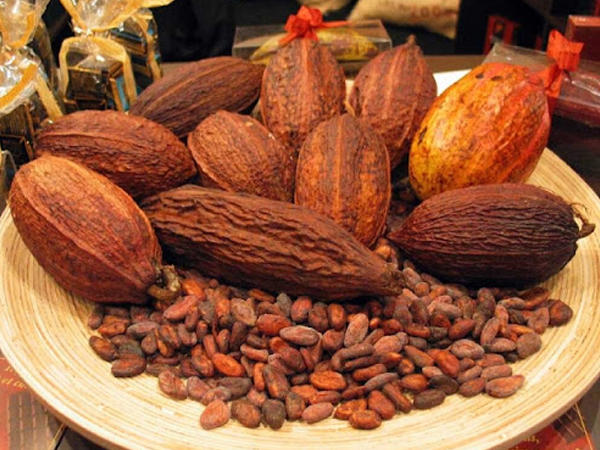
Cocoa is often paired with corn, a practice very common in Central America and Mexico. When the proteins are consumed together, the chemical score of the mixture can improve markedly along with the biological quality depending on the relative distribution of the different proteins in these two sources. When improvement was achieved, proteins were indicated as supplementary. Cocoa and corn are supplements in which the amino acid content of the blend is improved. For example, the higher methionine in corn and the amino acid profile of cocoa improve corn's low lysine and tryptophan content. When the human diet is full of calories, the protein requirement required to maintain a positive nitrogen balance in humans is about 0.8 g per kg of body weight or 12 - 16% of total daily calories. Accordingly, with the proper supplementation by consuming a combination of cocoa and corn, only 3 4 ounces (about 25 grams) of crude protein from a 50:50 cocoa powder and corn protein blend would almost meet the need. essential amino acids of a person.
Nutritional ingredients | Value (Calculated per 100g cocoa powder) |
Energy | 225-325 kcal |
Protein (g) | 18-19 |
Fat (g) | 20-25 |
Carbohydrate (g): | 45-55 |
Fiber | 25-35 |
Can be digested | 10-20 |
Single line | 1-2 |
Minerals (g): | 5-6 |
Canxi (mg) | 100-180 |
Photpho (mg) | 750-1000 |
Iron (mg) | 10-15 |
Magie (mg) | 500-600 |
Vitamin: |
|
Vitamin A (µg) | 10-20 RE |
Vitamin E (mg) | 0,1-0,2 |
Vitamin K1(µg) | 2,5 |
Other components (g): |
|
Polyphenols | 7-18 |
Theobromine | 2-3 |
Caffeine | 0,1 |
cholesterol | 0 |
3. Carbohydrates
Freshly harvested cocoa beans contain about 12-14% digestible carbohydrates and a significant amount of indigestible fiber carbohydrates. In the layer of fresh rice, there are all kinds of simple sugars to create sweetness. The sticky rice layer also contains pentosans (2-3%), citric acid (1-2%), and salt (8-10%), mainly potassium complexes. However, after six days or more according to the traditional cocoa bean processing method, the digestible carbohydrate content and the composition of the cocoa pods (the mucilage layer and the seeds) were significantly changed. During this process, the sticky rice layer is hydrolyzed and a number of complex products are produced, among them various sugars and short-chain ketoacids, and finally acetic acid and alcohols. Fermentation also reduces the carbohydrate content of the grain by 5-6%, due to the production of fermentation products.
4. Vitamins and Minerals
Cocoa is an excellent source of most essential minerals, especially calcium, copper, iron, manganese, magnesium, phosphorus, potassium and zinc. For copper, iron and magnesium, human requirements on a calorie basis are often over the limit. Although cocoa does not have many vitamins, when consumed with corn and other blends, especially pigmented fruits and vegetables, these supplements provide vitamins that cocoa is lacking. . Notably, cocoa pods contain 20-30 units of vitamin D2 (ergocalciferol) per gram or 300 units per gram of extractable fat. Therefore, cocoa products - such as pods - have been successfully used as ingredients of animal feed to achieve maximum growth or milk production.
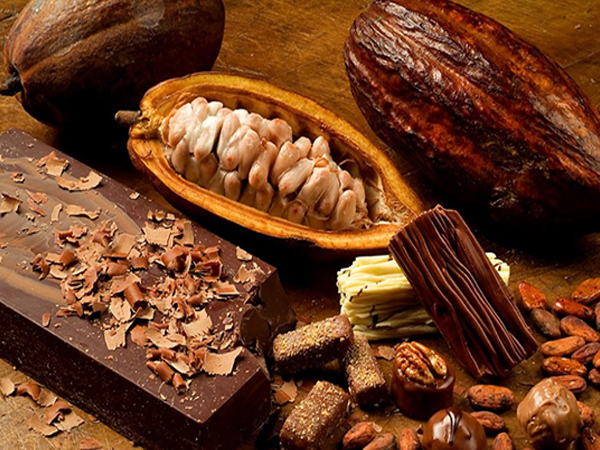
5. Other ingredients
The amount of non-nutritive compounds (only in the sense that they do not provide energy) present in 100 grams of cocoa powder can account for 20% of the powder weight: polyphenolics 7 - 18 grams (mainly anthocyanidins, proanthocyanins and derivatives) other catechins); theobromine 2 - 3 grams; and caffeine 0.1 grams per 100 grams of powder.
6. Where to buy cocoa powder?
Cacao Trong Duc is proud to be a supplier of 100% pure cocoa powder products with a nationwide dealer network. Trong Duc Cacao is committed to providing 100% pure cocoa powder products, without mixing impurities or additives.
